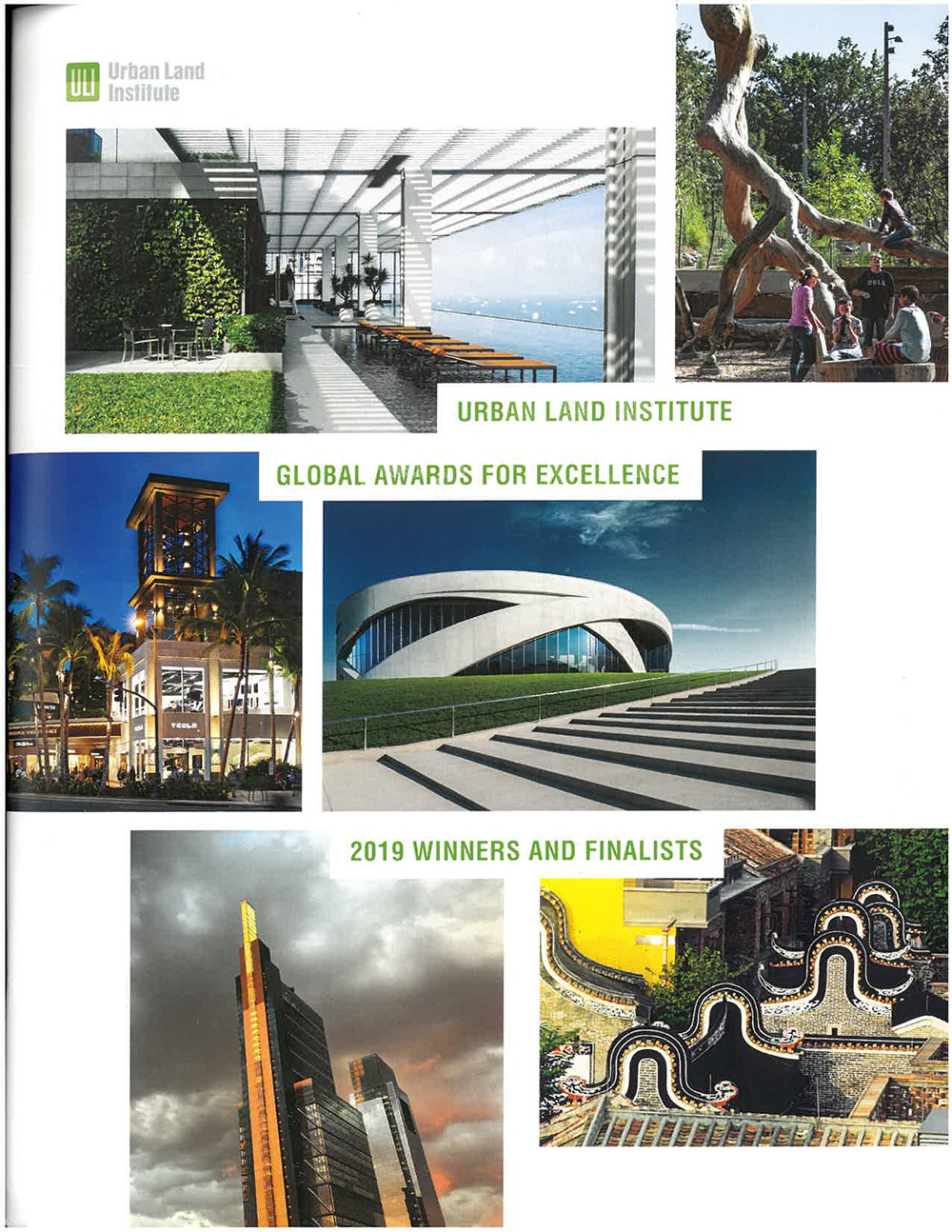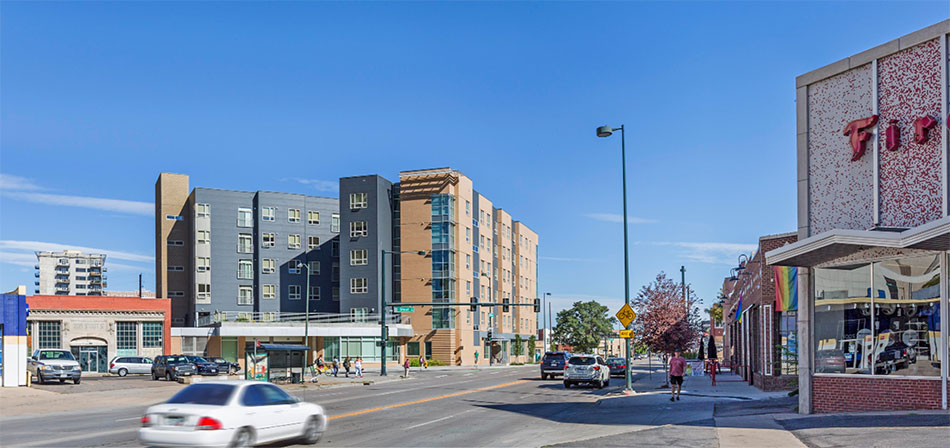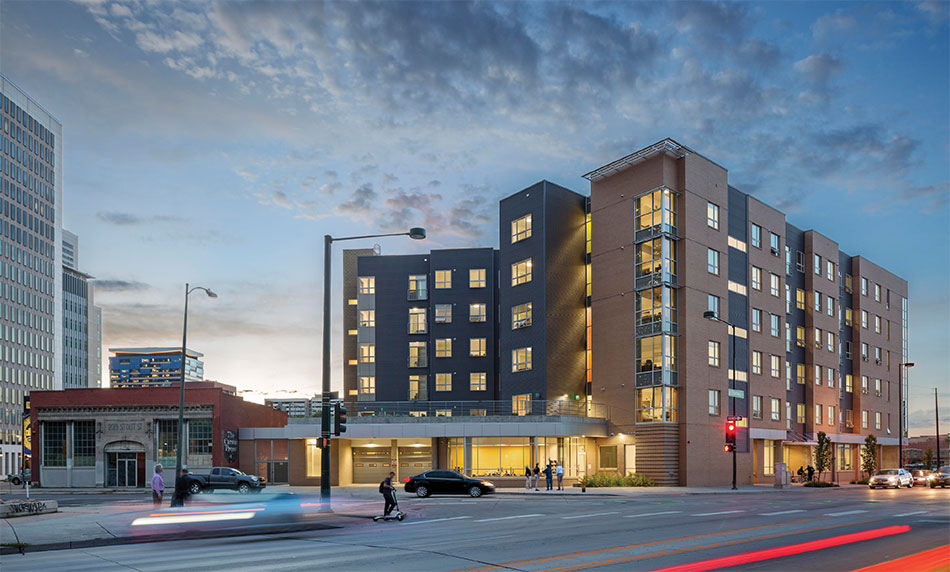News
ULI Colorado : Development 360 ( 2019 Case Study )
Posted: March 17, 2020

Nineteen extraordinary developments from around the world have been selected as finalists for the 2019 ULI Global Awards for Excellence competition, which is widely recognized as one of the real estate industry’s most prestigious award programs. This year’s finalists include 14 in North America, four in Asia, and one in Europe.
The finalists (with the names of the developers and designers listed in parentheses) are as follows:
• 150 North Riverside, Chicago, Illinois (developer: Riverside Investment and Development; de signer: Goettsch Partners).
• 1800 Arch Street, Philadelphia, Pennsylvania (developers: Liberty Property Trust/Liberty Property 18th & Arch LP, Comcast Corporation; designers: Foster and Partners, Kendall/Heaton Associates).
• Cornell Tech Campus Framework Plan and Phase I Site Development, New York, New York (developers: Forest City Ratner Corporation; Hudson Companies; Related Companies; U3 Advisors; Cornell University; New York City Economic Development Corporation; designers: Skidmore, Owings & Merrill LLP; James Corner Field Operations; consultants: Karen Backus & Associates; Sirefman Ventures; Tishman Construction; AKF / In-Posse; Robert Silman; Philip Habib & Associates (PHA); Two Twelve; Fried Frank; Jaros, Baum & Bolles; DeSimone Engineers; Cerami & Associates; Pentagram; Gleeds; Langan Engineering; RWDI Consulting Engineers and
Scientists; Brandston Partnership).
• Empire Stores, Brooklyn, New York (developers: Midtown Equities, HK Organization, Rockwood Capital; designers: S9 ARCHITECTURE, STUDIO V ARCHITECTURE).
• Frick Environmental Center, Pittsburgh, Pennsylvania (developers: Pittsburgh Parks Conservancy, City of Pittsburgh; designer: Bohlin Cywinski Jackson).
• Gathering Place, Tulsa, Oklahoma (developer: George Kaiser Family Foundation; designers: Michael Van Valkenburgh Associates, Mack Scogin Merrill Elam Architects).
• Guoco Tower, Singapore (developer: TPC Commercial Pte. Ltd.; designer: Skidmore, Owings & Merrill).
• H Queens, Hong Kong (developer: Henderson Development Agency Limited; designer: CL3 Architects).
• Ink Block, Boston, Massachusetts (developer: National Development; designers: Elkus Manfredi Architects, Copley Wolff Design Group, Landing Studio).
• International Market Place, Honolulu, Hawaii (developer: Taubman Centers; designers: 505 Design, JPRA Architects, WCIT architects, HLB Lighting, Walters, Kimura, Motoda, BKBC Architects).
• Knowledge and Innovation Community (KIC), Shanghai, China (developer: Shui On Land; designers: Skidmore, Owings & Merrill, Palmer & Turner, Atkins, Charpentier Architecture Design, Terry Farrell & Partners, Tongji Design Institute, BWSS, Gensler, Tianhua, Leigh & Orange, Hassell, 3XN, AECOM, EMBT).
• Lingnan Tiandi (LNTD) Lot 1, Foshan, Guangdong, China (developer: Shui On Land; designers: Ben Wood Studio Shanghai, Skidmore Owings & Merrill).
• Moscow Street Program, Moscow, Russia (developer: Department of Overhaul of the City of Moscow; designers: Strelka KB, Djao-Rakitine, Snøhetta, West 8, Topotek 1, Martha Schwartz Partners, OKRA, Karres + Brands).
• Pier 17 at the Seaport District, New York, New York (developer: the Howard Hughes Corporation;
designer: SHoP Architects).
• Renaissance Downtown Lofts, Denver, Colorado (developers: the Colorado Coalition for the
Homeless, and subsidiaries Renaissance Housing Development Coporation and Downtown Lofts
Housing Corporation; designers: Christopher Carvell Architects, FCI Constructors, Prescient,
Group 14 Engineering).
• The Mark, Seattle, Washington (developers: Daniels Real Estate, Stockbridge Real Estate; designers: ZGF Architects, Phillippe Starck, Ron Wright & Associates).
• The Scioto Peninsula Cultural District, Columbus, Ohio (developers: Columbus Downtown Development Corporation, Capitol South Community Urban Redevelopment Corporation; designers: MKSK, Jerome Scott Architects, Allied Works Architecture, the Olin Studio, Ralph Appelbaum Associates).
• The Wharf Phase I, Washington, D.C. (developers: Hoffman-Madison Waterfront: PN Hoffman, Madison Marquette, ER Bacon Development, City Partners, Paramount Development, Triden Development Group; designers: Perkins Eastman, Studio MB, Kohn Pedersen Fox, Fox Architects, Rockwell Group, BBG-BBGM, Handel Architects, WDG, Cunningham Quill, SmithGroup JJR, MTFA, SK&I, Landscape Architecture Bureau, Lee and Associates, Nelson Byrd Woltz, Michael Vergason Landscape Architects, Parker Rodriguez, ZGF, Moffat & Nichol, RicheyWorks).
The finalists were selected by a jury made up of ULI members representing a multidisciplinary collection of real estate development expertise, including fi nance, land planning, development, public affairs, design, and other professional services.
“What distinguished the 19 fi nalists is the way they have signifi cantly improved the communities in which they are located,” said leading ULI member Jacinta McCann, jury chairman and design adviser to AECOM. “These projects have brought new life to these places and are creating a spillover effect in their cities. They are unlocking the public realm for use by residents and visitors in a way that hasn’t been available before. Through their long-lasting impact, they are demonstrating the best leadership globally in the responsible use of land.”
In addition to McCann, jury members are Stuart Ackerberg, chief executive offi cer, Ackerberg, Minneapolis; Amy Coburn, university architect/director of planning design and construction, University of New Mexico, Albuquerque; Antonio Fiol-Silva, founding principal, SITIO architecture + urbanism, Philadelphia; Michael Grove, chair of landscape architecture, civil engineering, and ecology principal, Sasaki Associates, Watertown, Massachusetts; Blake Olafson, managing partner, Asia Capital Real Estate Pte. Ltd., Singapore; Gayle Starr, managing director, Prologis, San Francisco; and Becky Zimmermann, president, Design Workshop, Denver.
The Awards for Excellence program, established in 1979 and subsequently expanded to a global program, recognizes real estate projects that achieve the highest standard of excellence in design, construction, economics, planning, and management. The program is viewed as the centerpiece of ULI’s efforts to identify and promote best practices in all types of real estate development.

Project Description
From the outside, Renaissance Downtown Lofts looks like most new apartment buildings in Denver; inside, it offers the city’s homeless population a chance at stability. The appearance of the building offers a sense of dignity to homeless individuals and seeks to mitigate the sense of isolation that often comes with homelessness. The lofts sit on a site that had been an abandoned one-story drive-up bank in Denver’s Arapahoe Square neighborhood. Now, thanks to Colorado’s Coalition for Homeless, it is a six-story apartment building with social services, including job programs, mental health services, and addiction treatment located on the first floor.
There are 101 one- and two-bedroom apartments designed to provide housing and stability for homeless individuals and families. The building also has several common spaces, such as a shared kitchen, a community lounge, and a green roof and raised courtyard. The lofts are less than a quarter mile (0.4 km) from two light-rail stations, allowing residents easy easy access to transit.
The city has estimated that Renaissance Downtown Lofts will help save $2.9 million per year by providing services that the homeless otherwise would not receive. US Bank donated the land, and construction was funded by a social impact bond program and private investment for upfront costs. As part of the social impact bond program, the city repays investors only if the residents stay out of jail and detox; the city made its first payment in October 2018. The site is oddly shaped, so to cut down on costs and aid in attaining sustainability goals, prefabricated Prescient light-gauge steel panels were used. The building exceeds the criteria for Enterprise Green Communities.

